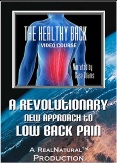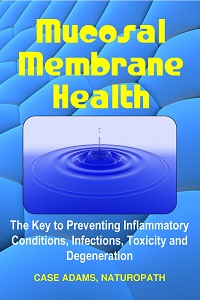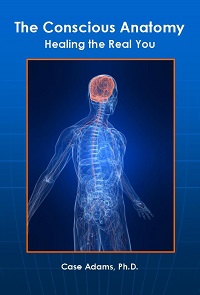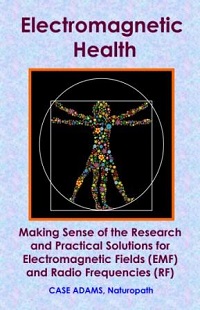Osteopathic Manual Therapy Eases Low Back Pain
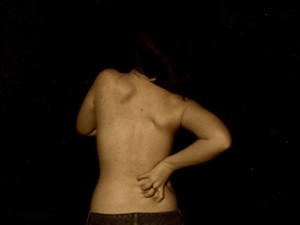
Manual therapy for low back pain
More than a quarter of Americans over 18 years old have experienced low back pain within the past 90 days, and low back pain is the most prevalent cause of pain among those over 45 years old.
Meanwhile, some 600,000 people elect to undergo surgery every year for low back pain. This is despite the research showing that many surgeries are failures and reduce overall mobility.
In this article
Surgery for back pain often unsuccessful
A 2011 study from researchers at four medical schools including the University of Cincinnati College of Medicine reviewed the records of 1,450 patients with debilitating low back pain.
Of the total, 725 patients underwent surgery to fuse two or more vertebrae together in an attempt to resolve their pain. The other 725 patients did not have surgery.
After two years, only 26 percent of the patients who underwent surgery were able to return to work. This means the failure rate for fusion surgery was an astonishing 74 percent. In addition, some 36 percent of those who underwent surgery had complications due to the surgery. And 11 percent ended up with permanent disability.
Meanwhile, 67 percent of the patients who did not undergo surgery were able to return to work within the same two-year period.
Physical therapy often successful
Even with surgery being recommended by many doctors, the evidence shows that physical therapy significantly benefits a majority of patients.
In a 2016 study from the University of Illinois at Chicago, 4,597 low back pain patients were tested. The study found that physical therapy reduced pain for 59 percent and 60 percent of patients in the resting and the mobility pain rating scales, respectively.
Reasons for a lack of benefit for the others included obesity, smoking and night symptoms.
What is osteopathic manipulative treatment (OMT)?
A highly successful form of physical therapy is osteopathic manipulative treatment, or OMT. Research published recently in the Journal of the American Osteopathic Association has proven that this natural form of therapy called osteopathic manipulative treatment (OMT) can significantly help low back pain.
Osteopathic manipulative treatment is the progressive use the therapist pushing against ones own muscle strength to correct regions of imbalance within the body. An osteopath who uses OMT will have the patient lie down on a treatment table and will push or pull muscle groups while the patient provides the opposing force. This can provide musculature and joint balance where it is lacking.
Often low back pain is a result of musculature, ligament and joint imbalance among the lumbar, abdominal, pelvic and sacral regions.
The application of OMT is also called manual therapy because it relies upon hands-on treatment. The treatment doesn’t require drugs or injections, and can be applied in a comfortable clinical setting.
Osteopaths or physical therapists who perform OMT typically receive special training for this. Not every practicing osteopath has been trained in OMT. While OMT training is increasing among Osteopathic medical schools, this manual therapy is often given as additional training and licensure.
OMT proves its usefulness for low back pain
The research mentioned above was done at the University of North Texas Health Science Center in Fort Worth, Texas. Two studies tested 455 adults with a history of low back pain.
The first study measured whether OMT helped low back pain patients recover. The second study identified which types of patients and conditions responded most from OMT treatments. Randomized sham control was used in the both studies.
Sham control is a form of placebo where the doctor will perform a type of manual therapy that is not the specific treatment called for. Sham control is also done in acupuncture treatment research. Here the placebo patients will receive the needle therapy, but in locations different than the treatment being prescribed.
The researchers gave each patient six OMT sessions over a two-month period. The patients were tested prior to treatment and a month after treatment to assess the success of the treatment or the sham treatment as appropriate.
A therapeutic response was measured by pain severity, mobility and other criteria.
Both studies found that patients who began with disability scores of 17 or greater before therapy ended up with significantly reduced pain and increased mobility. Those patients who started with 7 or better disability scores also had significant benefits from OMT therapy: But their improvements were not as great as those in the 17 or greater category.
These patients with substantial improvements saw improvements of 50 percent or greater in both pain and mobility.
The researchers concluded that patients should try OMT before resorting to surgery.
John C. Licciardone, DO, commented on the results:
“Subgrouping patients according to chronic low back pain intensity and function appears to be a simple strategy for identifying patients who can attain substantial improvement with OMT. From a cost and safety perspective, OMT should be considered before progressing to more costly or invasive interventions.”
Self-guided manual therapy
Can any of these strategies be applied at home? After having been trained under two clinicians trained in OMT – a D.O. and a Physical Therapist – I developed a series of exercises that apply many of the strategies employed in OMT.*
These self-guided manual therapy techniques in my course are illustrated and described along with a host of other techniques. These that can help rebalance the musculature and ligature to help relieve imbalances that can produce lumbar and sacral pain:
REFERENCES:
Nguyen TH, Randolph DC, Talmage J, Succop P, Travis R. Long-term outcomes of lumbar fusion among workers’ compensation subjects: a historical cohort study. Spine (Phila Pa 1976). 2011 Feb 15;36(4):320-31. doi: 10.1097/BRS.0b013e3181ccc220.
Licciardone JC, Gatchel RJ, Aryal S. Targeting Patient Subgroups With Chronic Low Back Pain for Osteopathic Manipulative Treatment: Responder Analyses From a Randomized Controlled Trial. J Am Osteopath Assoc. 2016 Mar 1;116(3):156-68. doi: 10.7556/jaoa.2016.032. PubMed PMID: 26927909.
Licciardone JC, Gatchel RJ, Aryal S. Recovery From Chronic Low Back Pain After Osteopathic Manipulative Treatment: A Randomized Controlled Trial. J Am Osteopath Assoc. 2016 Mar 1;116(3):144-55. doi: 10.7556/jaoa.2016.031. PubMed PMID: 26927908.
Studies find osteopathic manipulative treatment improves low back pain, avoid surgery. American Osteopathic Association. Feb. 29, 2016.
Andicochea CT, Fulkerson J, Taylor BM, Portouw SJ. Manual Therapy for Chronic Low Back Pain in an F-5 Pilot. Mil Med. 2015 Oct;180(10):e1132-5. doi: 10.7205/MILMED-D-14-00712.
National Institute of Neurological Disorders and Stroke. Low back pain fact sheet.
US Dept of Health and Human Services/CDC: National Centers for Health Statistics. Chartbook on Trends in the Health of Americans 2006, Special Feature: Pain. Hyattsville, MD 2006
*The self-guided manual therapy exercises in this program are not to be confused with OMT nor suggested as replacements for OMT, physical therapy or any other treatment for low back pain. Talk to your doctor.

